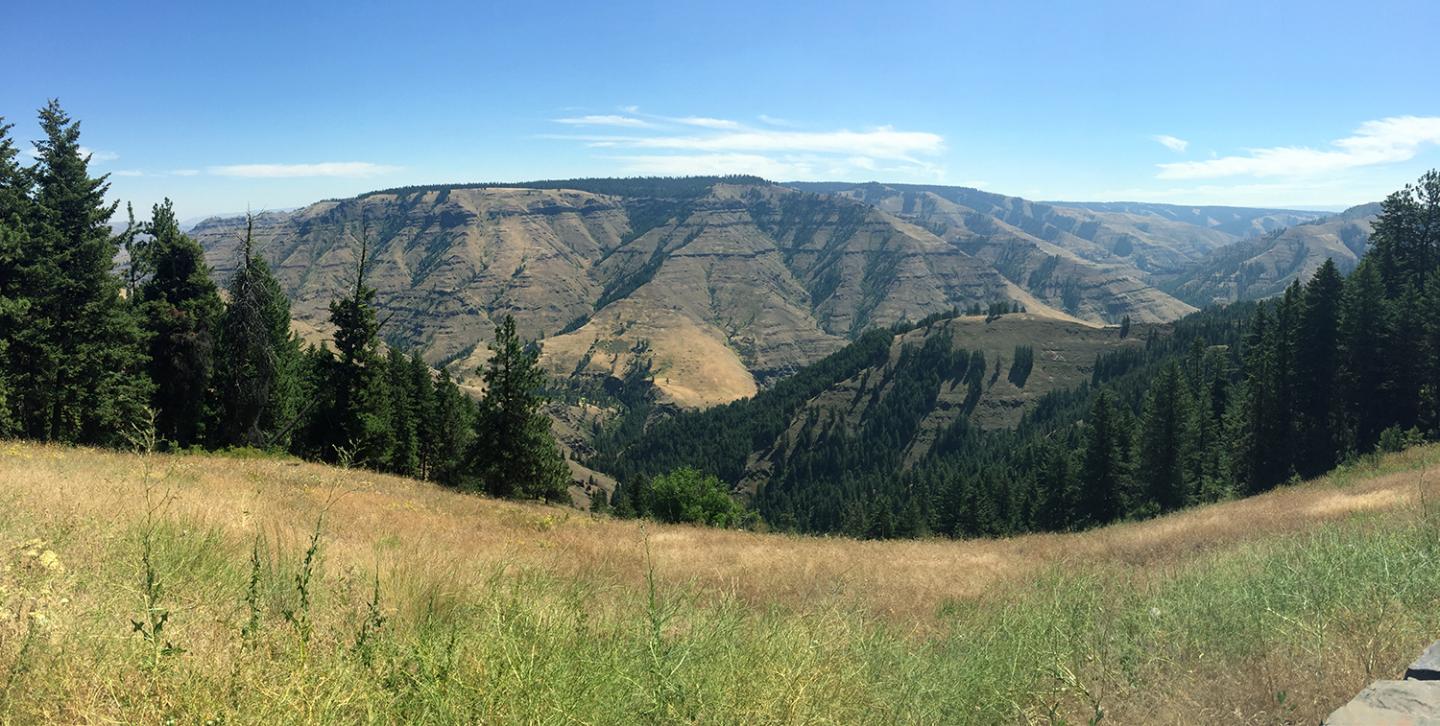Uplifting of Columbia River basalts has allowed University of Oregon researchers to better understand of how magma 14-16 million years ago shaped the region and why greenhouse gases released during a series of volcanic eruptions did not trigger a global extinction event.
The insights, “Pervasive Hydrothermal Events Associated with Large Igneous Provinces Documented by the Columbia River Basaltic Province,” published in Scientific Reports, were drawn from analyses of oxygen and hydrogen isotopes in crustal material, a mix of magma and original rocks, that is now exposed by geological uplifting and erosion.
The Columbia River Flood Basalts represent the youngest continental flood basalt province on Earth and one of the best preserved. It covers roughly 210,000 square kilometers, extending from eastern Oregon and Washington to western Idaho and part of northern Nevada.
Pivotal to the research were 27 samples from 22 different dikes – wall-like bodies of magma that cut through the sheeted lava flow landscape during the eruptions. A 10-meter-thick feeder dike into the Wallowa batholith, formed from a mix of basaltic magma and granite 16 million years ago, for example, likely acted as a magma conduit for up to seven years. It formed one of the largest surface lava flows and chemically altered about 100 meters of surrounding bedrock.
“We found that when hot basaltic magma intruded into the crust it boiled groundwater and volatilized everything in and near its path, causing chemical and isotopic changes in the rocks and the release of greenhouse gases,” said Ilya Bindeman, a professor in the Department of Earth Sciences, who led the study.
Collectively, the effects of the heating throughout the flood-basalt region may have lasted about 150 years after magma stopped flowing, building the landscape that is visible today across the region, the seven-member research team from three countries concluded.
“The Columbia River basalts that are so dear to us in the Pacific Northwest,” Bindeman said. “They are now uplifted and eroded to the level that allows us to sample the contacts of these basalts with the previous rocks. The same process today is happening every hour and everywhere under midocean ridges and also on continents. By studying these not-so-ancient rocks we have learned what is going on under our feet.”
Computer modeling done with the chemical data suggests that the hydrothermal heating of the region’s original metasedimentary rocks – a metamorphic rock formed through the deposition and solidification of sediment – and relatively low levels of organic matter affected by the eruptions would have generated the release of about 18 gigatons of carbon dioxide and methane. One gigaton equals a billion metric tons.
The individual Columbia River basalt eruptions were each 10 to 100 times larger than the largest historically experienced eruptions of Iceland’s Eldgja and Laki volcanic eruptions in the years 934 and 1783, respectively, noted study co-author Leif Karlstrom, a professor of earth sciences, who along with Bindeman is a member of the Oregon Center for Volcanology.
The Laki eruption, which killed thousands of people, released volcanically derived greenhouse gases that generated a year without summer followed by a warm year across Europe and North America, Karlstrom said.
While the Columbia River eruptions released 210,000 cubic kilometers of basaltic magma over 1.5 million years, leading to global climate impacts, the researchers concluded, they did not cause mass extinctions such as the one triggered by eruptions over a similar timescale about 250 million years ago that formed the Siberian Traps.
The difference, the research team theorized, is in the geology of the regions. The Columbia River basalt eruptions occurred in igneous crust that contained low levels of organic matter that could be released by hydrothermal heating. Eruptions in the Siberian Traps occurred in organics-rich sedimentary rocks.
While the new findings suggest that similar regional-scale groundwater circulation around dikes is a signature of flood basalt volcanism globally, the researchers noted, the consequences may not always be catastrophic on a broad scale.
In the Columbia River basalts and the likely related Yellowstone hotspot, hydrothermal circulation is manifested as subtle isotopic signals, a depletion of oxygen isotopes, in the rocks, the research team found.

